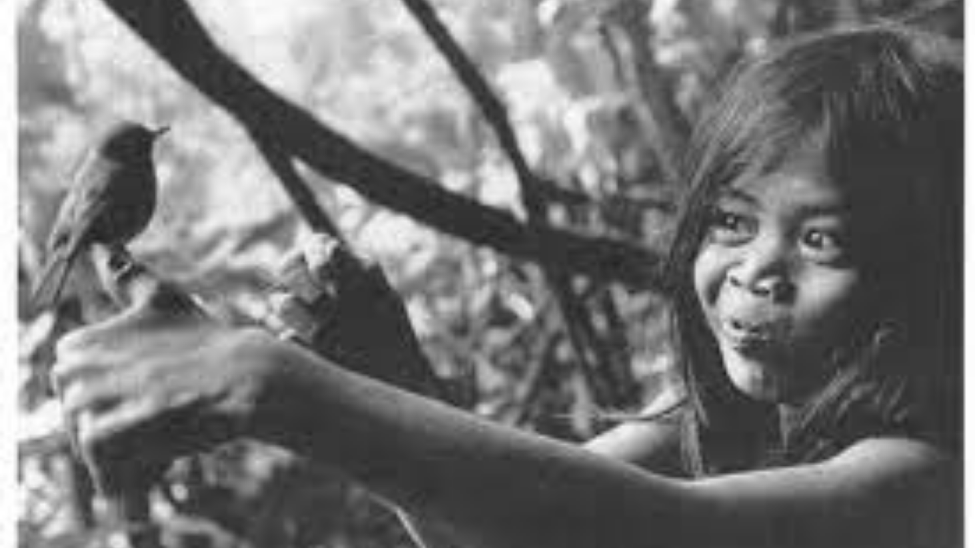If the outcome is cultural distortion, then some things are better left undiscovered. Same goes with people and groups of people. In the case of South Cotabato’s Tasaday, did we bring help and protection or did we tarnish a quiet culture free from the influence of the modern world?

In 1971, the head of the Philippines Presidential Assistance on National Minorities (PANAMIN), Manual “Manda” Elizalde announced the discovery of a cave-dwelling tribe, believed to be the last of the Stone-Age people, and called them the Tasadays. Dafal, a local hunter discovered them while setting traps in the forest of South Cotabato. He later notified Manda Elizalde about the presence of an unknown tribe which he described as, “unknowing of the presence of other people on the planet”. They wore leaves as clothes, have their own means of communication, but do not have a word for ocean, rice, or even other people.

The discovery captured international attention. The National Geographic even published a 32-page story titled, “The Gentle Tasaday: A Stone Age People in the Philippine Rain Forest.” As claimed, the Tasadays had been living in isolation for 1,000 years. A year later, the land surrounding the Tasaday cave was declared by the late dictator and President Marcos as an ancestral land.
John Nance, author of the 1975 best-selling book, The Gentle Tasaday, then bureau chief for the Associated Press in the Philippines was granted access to the lands to capture photos and videos of the Tasadays. However, in 1972, anthropologist Carol Maloney and ethnobotanist Douglas Yen found inconsistencies with regard to the tribe’s diet and language— making the claim that they have been living for 1,000 years questionable.

The Tasaday’s international popularity
As the discovery captured more attention from the local and international media, more questions were raised and left unanswered. In 1976, Marcos prohibited people from interacting with the Tasadays. The move only made people’s suspicions grow bigger regarding the authenticity of the tribe and the veracity of their claims. It took a decade before stories and news about the Tasasdays resurfaced again which overturned previous claims—Stone Age Tasaday is a hoax.
After Marcos and his family fled the country in 1986, Elizalde’s influence and hold disappeared along with it. There were claims that their 1976 move to bar about 19,000 acres of land from public was part of Elizalde’s massive plan to grab land.

On the same year, Swiss journalist Oswald Iten revisited the Tasadays. He was surprised to see the tribe living in houses and wearing modern clothes. He was also able to obtain some of the accounts of the 16-tribe Tasadays discovered in 1971. They claimed that Manda Elizalde told them that they would get help and protection faster if they wear leaves as dress and live in caves for them to become better cavemen. They further alleged that before he came to their land, they were living in huts and were farming.
Elizalde resurfaced, along with some Tasadays
Come 1988, Elizalde campaigned to prove the legitimacy of the Tasadays after they were called “fake”. Some members of the Tasadays flew to Manila to file for a complaint against individuals. Mostly professors, who were calling them a hoax. One of those members was “Lobo”, the tree-climbing Tasaday featured on the 1972 National Geographic cover story.

In an I-Witness feature-documentary of Kara David about the Tasadays, Lobo shared his feelings. He shared how angry he was about the people who called them liars. He also mentioned that he wished they were never discovered, then maybe they could have protected their peaceful living. After winning the lawsuit, on the same year, President Corazon Aquino declared the Tasaday as legitimate Stone Age tribe.
Many anthropologists and experts say that the truth about the Tasadays is a mixture of both. Like the fact that the Tasadays are genuinely forest people. That they left the lowlands when a plague struck them and opted to live in caves. But contrary to the initial claim that they have been out of contact for 1,000 years is improbable. Experts say that they are likely out of contact for only no more than 150 years.

These studies focus on the evidence presented and available at hand. In the aforementioned i-Witness documentary, we could hear the actual accounts of the people involved. Dul, Lobo, and his mother Itet (wife of their then tribe leader Belangan). The question posed by the anchor is on-point. If they were only forced to live like cavemen, how could Dul remember everything about the cave? Who lives where, and what events transpired during the time they were living in the Tasaday cave?

The Tasadays are genuine as people
The Tasadays are genuine as people. They were forest-dwelling tribes and have lived in caves during the time of their discovery. What may not be genuine is how they were presented and paraded to the public. They may have been living in peace in caves with their cultures intact until people outside their dominion influenced them, intentional or not.
To answer the question above, the Tasadays, Manobo-Tasaday, Blit, whatever you call them, as mentioned by Dul, one of the remaining pure Tasadays, “Mas mabuti pang ‘di na lang kami natagpuan.”
We sometimes forget that people are far more important than the actual discovery. Perhaps their discovery would have been beneficial for them if we truly offered protection and helped them preserve their culture. If the result of their discovery is cultural distortion by finding labels and matching them with what fits to our criteria as authentic, instead of putting more importance to what they actually say and how they do things, maybe there would be no need for the Tasadays to experience the torture of proving their identity.


